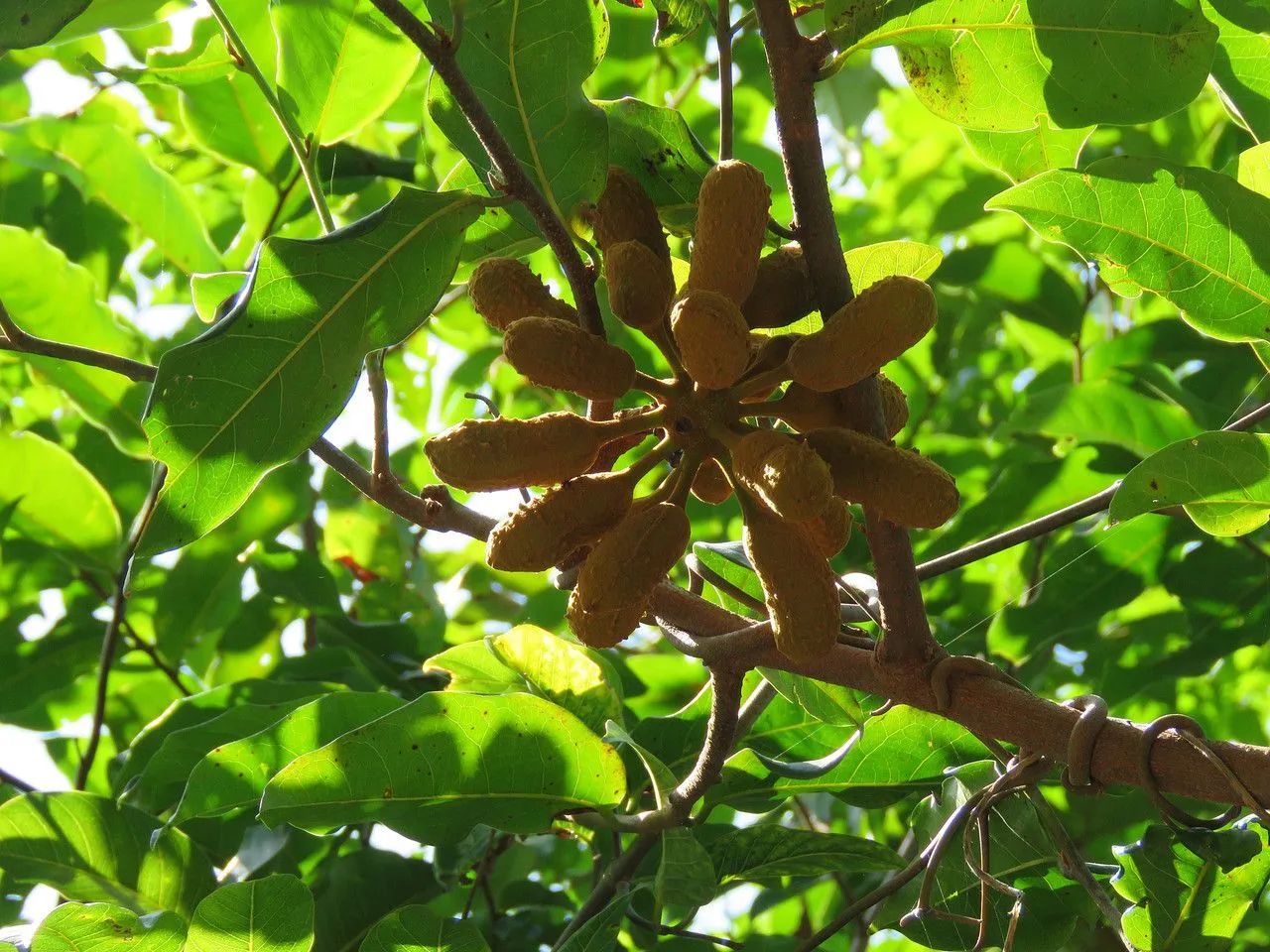
Author: P.Beauv.
Bibliography: Fl. Oware 2: 43 (1816)
Year: 1816
Status: accepted
Rank: species
Genus: Uvaria
Vegetable: False
Observations: W. Trop. Africa to S. Sudan
Finger-root, scientifically identified as Uvaria chamae, is a distinctive plant belonging to the Annonaceae family. This species is prominently native to the lush regions of Western Tropical Africa extending to Southern Sudan. It garners its common name due to the peculiar shape of its roots, which resemble fingers, often intriguing botanists and plant enthusiasts alike.
First formally described in 1816 in the authoritative work “Fl. Oware” by the botanist P. Beauv., Uvaria chamae has since marked its importance in the botanical world as a significant member of its family. The Annonaceae family, known for its diverse range of flowering plants, harbors many species that have adapted well to tropical climates, and the Finger-root is no exception. Its ability to thrive in various tropical conditions from West Africa’s dense, humid forests to the more arid regions of Southern Sudan highlights its versatile nature.
Finger-root is often studied for its potential medicinal properties and ecological roles. This plant is not only a subject of interest for its morphological features but also for its possible uses in traditional medicine across its native range. Locally, parts of Uvaria chamae are frequently employed in remedies for a variety of ailments, showcasing the rich ethnobotanical knowledge of the communities within its distribution area.
Ecologically, the Finger-root plays a role in its habitat’s biodiversity. As part of the West and Central African biomes, it contributes to the intricate web of life, supporting various fauna and flora. Its presence is a testament to the rich plant diversity that these regions support, forming an essential component of their natural heritage.
In summary, Uvaria chamae or Finger-root is a plant of considerable interest due to its distinctive root structure, medicinal potential, and ecological significance. Despite having been described over two centuries ago, it continues to fascinate and provide value to both science and local practices, cementing its status within the Annonaceae family and in the regions it inhabits.
Eng: finger-root
En: Finger-root
Taken Dec 20, 2019 by Herwig Mees (cc-by-sa)
Taken Jul 12, 2022 by Tharunoju Laxman kumar (cc-by-sa)
Taken Jul 3, 2021 by Guillaume fawie (cc-by-sa)
Taken Jul 12, 2022 by Tharunoju Laxman kumar (cc-by-sa)
Taken May 12, 2019 by friday peter (cc-by-sa)
© copyright of the Board of Trustees of the Royal Botanic Gardens, Kew.
Family: Myrtaceae Author: (F.Muell.) K.D.Hill & L.A.S.Johnson Bibliography: Telopea 6: 402 (1995) Year: 1995 Status:…
Family: Rubiaceae Author: Pierre ex A.Froehner Bibliography: Notizbl. Bot. Gart. Berlin-Dahlem 1: 237 (1897) Year:…
Family: Sapindaceae Author: Koidz. Bibliography: J. Coll. Sci. Imp. Univ. Tokyo 32(1): 38 (1911) Year:…
Family: Asteraceae Author: A.Gray Bibliography: Pacif. Railr. Rep.: 107 (1857) Year: 1857 Status: accepted Rank:…
Family: Fabaceae Author: Medik. Bibliography: Vorles. Churpfälz. Phys.-Ökon. Ges. 2: 398 (1787) Year: 1787 Status:…
Family: Aspleniaceae Author: (Cav.) Alston Bibliography: Bull. Misc. Inform. Kew 1932: 309 (1932) Year: 1932…